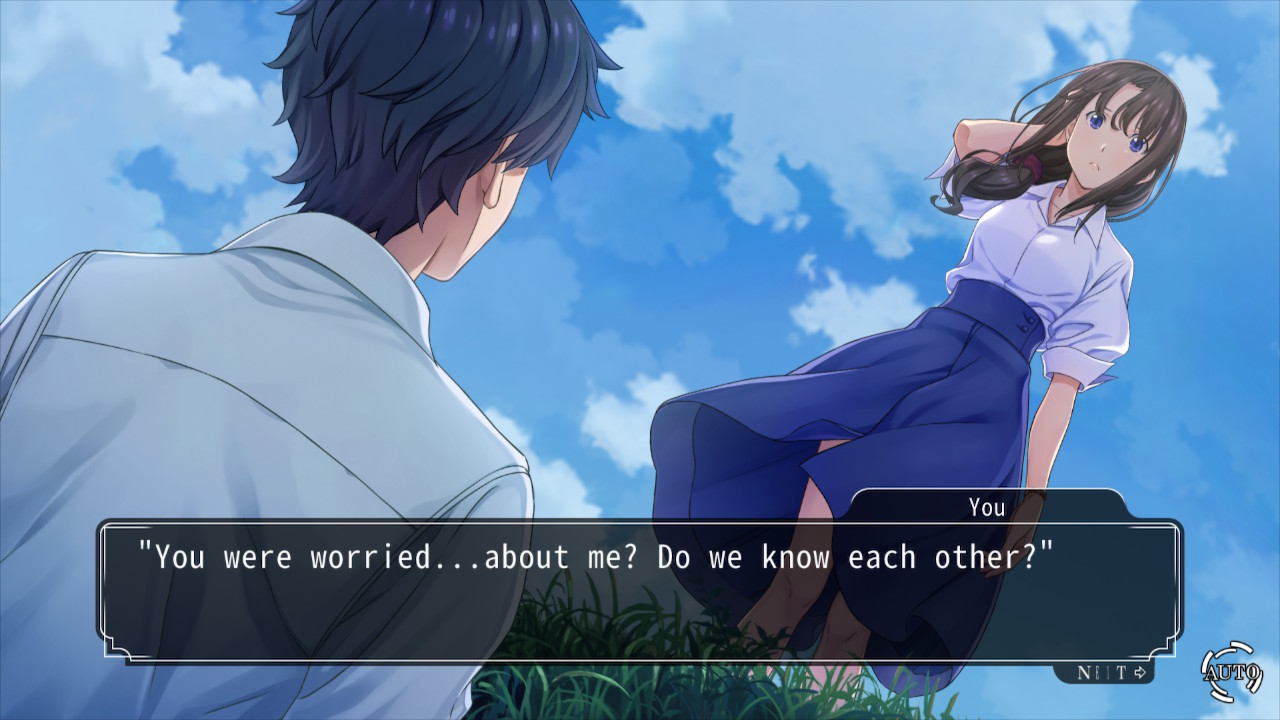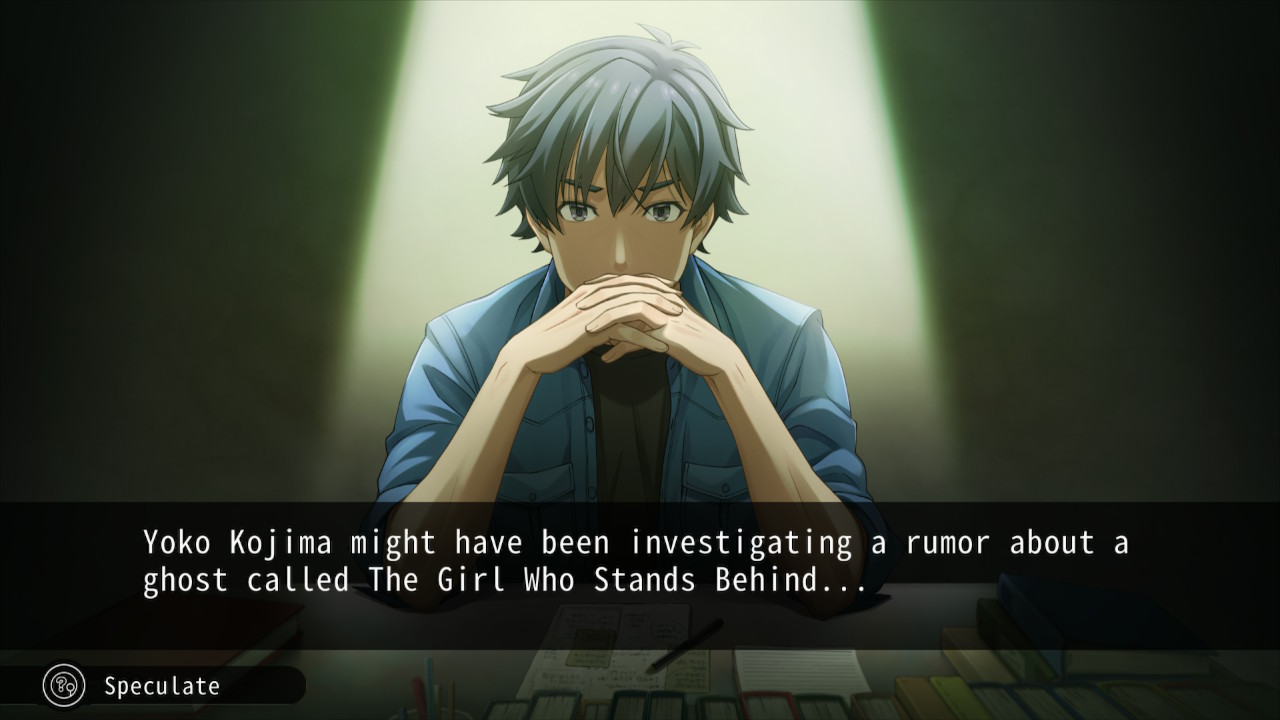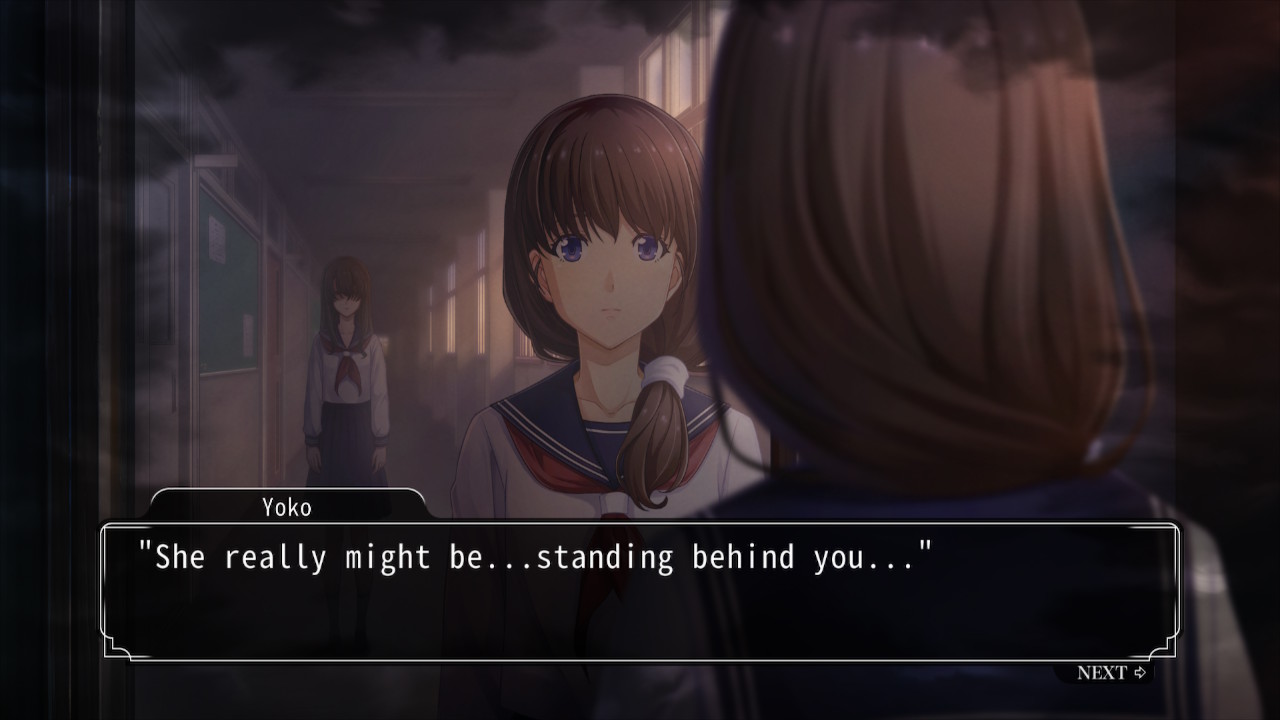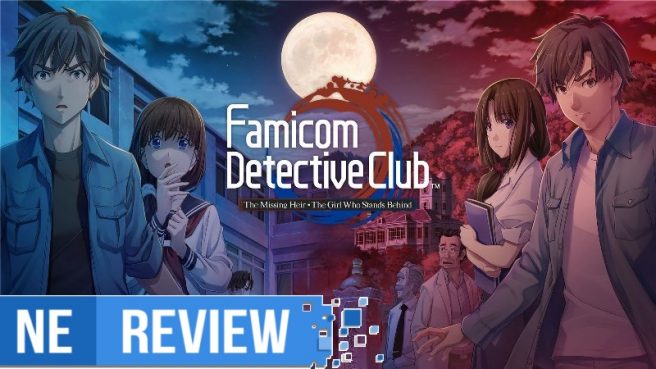[Review] Famicom Detective Club
System: Switch
Release date: May 14, 2021
Developer: Mages / Nintendo
Publisher: Nintendo
Plenty of video games have elements of mystery in their narrative – that feeling of unraveling something ambiguous can be a highly effective means to motivate a player to see the end of a story – but it takes something special to truly evoke the feeling that you are a real detective. It’s a feeling that I hadn’t really experienced in a game since L.A. Noire released, but I’m thrilled to report that both Famicom Detective Club: The Missing Heir and its prequel game The Girl Who Stands Behind, excel at being compelling, immaculately produced mystery stories that I didn’t want to put down.
The Switch versions of the Famicom Detective Club games are actually remakes of visual novels that originally launched exclusively in Japan decades ago on the Famicom. Originally bound by the limited 8-bit graphics of the NES, these games are now available in English for the very first time, and with a gorgeous new art style to boot. Despite the age of the original source material, these are hardly just basic visual novels, which are often experiences almost solely focused on reading. Rather, the Famicom Detective Club games actually feel much closer to being actual, well games. There’s certainly still plenty of reading involved, but you will spend just as much time interviewing characters and scouring environments for clues. It all helps make these titles significantly more immersive, to the point that, by the end of each game, I truly felt like I was the one who solved the mystery rather than the scriptwriters.

In both The Missing Heir and The Girl Who Stands Behind, players play as a teenage boy working for Utsugi Detective Agency, a small firm that works with police to solve murders across Japan. I wish I could explain here why the protagonist is a teenager, but it would be a big spoiler to do so as uncovering the main character’s origins is a huge pillar of both game’s narratives. In The Missing Heir, you’ll work to investigate the murder of a wealthy matriarch whose cagey family seem to be hiding some secrets – while simultaneously working to regain your memory after a mysterious accident. The Girl Who Stands Behind has a slightly stronger supernatural slant, with its core mystery surrounding rumors of a ghost that has haunted a local high school for over 15 years potentially being related to a recent student death.
I played through The Missing Heir first, and while it takes a while for the game to introduce all of its characters and really begin ramping up the plot, once it gets going it really doesn’t slow down. As circumstances became increasingly dire, I was genuinely surprised by some of the game’s “whodunit” reveals and twists – although more seasoned detectives than myself will likely have an easier time identifying the culprit. The Girl Who Stands Behind has a much brisker pace, immediately throwing you into some dark and compelling situations that, I feel, are more immediately gripping than those of The Missing Heir, but both have plenty of great moments.

One aspect of both Famicom Detective Club games’ narratives that really surprised me was the level of nuance in which emotional situations are portrayed. While the writing overall does lean more towards the casual conversation end of the diction spectrum, rather than something a little more poetic or literary, this creative choice allows for dialogues between characters that almost always feels convincingly natural. It makes big moments hit harder. When a character dies and a close family member is mourning their loss, you really believe that there’s a sense of distress they’re experiencing – well, unless you think they might be trying to hide something.
These convincing portraits of people are amplified tenfold by Famicom Detective Club’s magnificent visuals, which is hands down my favorite out of any visual novel I’ve played, ever. What stood out to me the most was how much motion is present in both characters and the environments. Grass, hair and clothes all sway and bounce in the wind, adding life to the world. Characters facial expressions will change if they don’t like what you are saying, and sometimes they may even turn a bit to slightly face a different direction. It’s all generally very subtle, but it elevates the immersiveness of the experience by a great degree, and there a few particular moments – like an on-foot chase sequence, for example – that really showcase how much dynamism this visual style is capable of achieving.

It’s great that Famicom Detective Club has some actual detective mechanics baked into the experience, as that was one of my major gripes with Root Film, which I also reviewed earlier this year. Progressing through the games’ narratives requires much more than reading text boxes, as you actually need to use information you’ve gathered along the way to guide your sleuthing. Throughout most of the game, players will have a Command Box located on the top left corner of the screen, and it’s from here that you can select from a number of options. You’ll mostly be talking to suspects and witnesses, figuring out what to bring up and in which order, but you also can select “Examine” to use a cursor to select objects of interest to look at, similar to a hidden object game. “Call/Engage” lets you select other nearby people to talk to (helpful if your current conversation isn’t going anywhere), “Show” lets you present collected evidence to people, and you can also occasionally use “Open” and “Take” on certain items. You will largely be investigating one location at a time, but some chunks of Famicom Detective Club present you with three or four locations you can travel between freely.
What the games don’t really explain very well is that despite all of these choices, there is generally only one way to advance the story and solve the mystery. Because you’re presented with so many ways to interact with a scene, this can be satisfying when you’re progressing, but frustrating (sometimes incredibly so) when you hit a wall and feel like you’ve exhausted all your options. Most of the times I got stuck were because I didn’t ask questions in the “correct” order, even if my actions made sense to me. There were other times when it was necessary, for some reason, to talk to characters to the extent that they became annoyed and left the room, at which point the protagonist would then remember something that would allow them to travel to next location. The logic doesn’t always check out like it should, which meant that for a big chunk of the first game, I felt like my progress was being halted for some pretty arbitrary reasons.

Eventually, though, I realized that the solution was to try and think the way the game does, rather than how I normally do. You would think this might actually minimize the feeling that you, the player, aren’t really doing much solving at all, but I felt pretty satisfied once I better understood what was expected of me. Overcoming that obstacle made cruising through the plot a much more palatable experience from that point on. It’s not a problem that should really exist in this type of game, and ultimately could have been resolved with some tutorials, but I’m willing to forgive it as my overall experience ended up being a positive one.
From a localization standpoint, I did notice some misspellings and grammatical errors in the script, but it didn’t happen frequently enough to take me out of the experience. All the voice acting is in Japanese, which I’m not fluent in, but tonally it sounded appropriate to me considering the subject matter. I found the game’s music unremarkable overall, but there were a handful of tracks that really stuck with me including a piano ballad that almost resembled a Final Fantasy title screen track. You can actually switch to the original chiptune soundtracks if you prefer, but I enjoyed the modern arrangements enough to stick with them for my playthrough.
The Verdict
While not completely free from occasionally frustrating gameplay mechanics, Famicom Detective Club: The Missing Heir and Famicom Detective Club: The Girl Who Stands Behind are some of the finest visual novels available on Switch, and excellent experiences for those who enjoy captivating mystery stories. With an exemplary visual style and believable, human characters, these stories engaged me way more than I initially anticipated, and I urge anyone with even a passing interest in the genre to check out this special portion of Nintendo’s history.
Review copy provided by the publisher for the purposes of this review.

